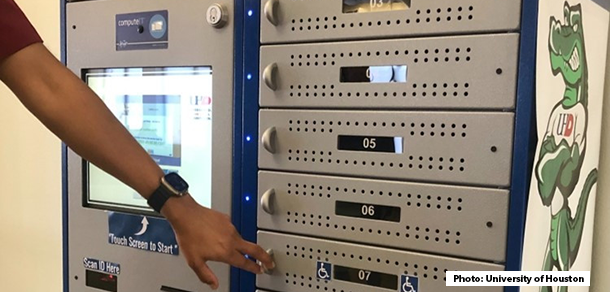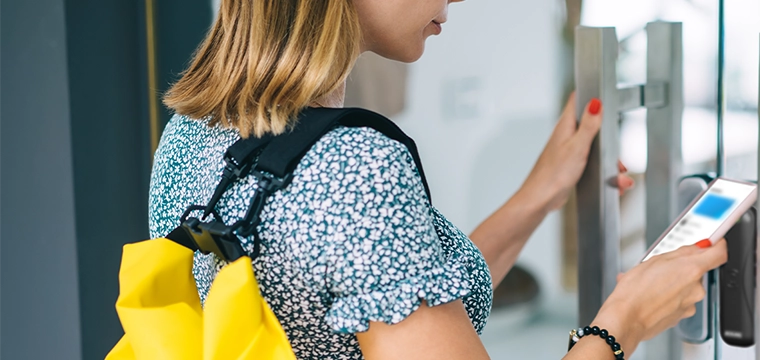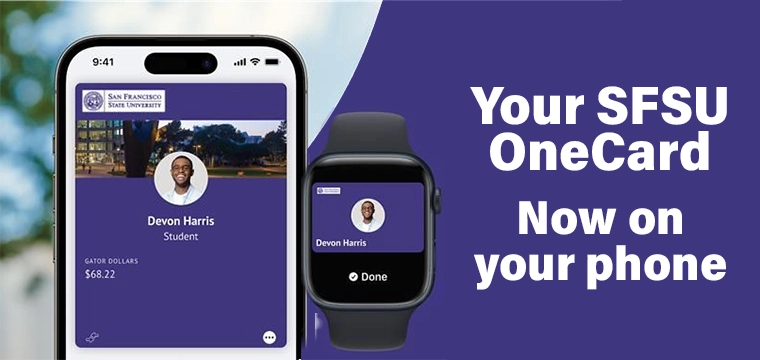
Self-service process extends window of availability, reduces staffing requirements
Dykes Library at the University of Houston Downtown has offered loaner laptops to students for years, but a new automated kiosk is streamlining the process.
The self-checkout kiosk holds up to 12 laptops. Currently enrolled students can grab one the laptop by clicking a few buttons on the kiosk’s touchscreen and presenting their student ID.They are available from 7 am to 11 pm and must be returned on the same day.
Hitesh Patel, UHD’s Labs and IT Services Assistant Director told the UHD News, “for testing purposes, we’re allowing checkout until 11 p.m. and will see how it goes. If we get more demand, we may extend it.”
In addition to extending the time window for availability, the kiosk is the only laptop checkout option available on weekends.
At the kiosk, the student is prompted to acknowledge acceptance of the loan agreement. Next, they present their student ID, provided by UH Downtown’s transaction system provider, Atrium.
A bay in the kiosk containing the laptop is then unlocked. The student receives an email receipt specificizing the due date and locker number to return the laptop.
When the laptop is returned to the correct bay and plugged into the charger mounted inside, a second email is sent confirming the transaction.
The laptops are free for student usage, but there is a $25 per day late fee and violators lose future checkout privileges. There is a $1400 charge for lost or stolen devices.
The prior process involved in-person checkout with a staff member presenting the agreement to be signed and verifying the student’s ID card. The new process is less labor intensive and more convenient for all parties. It is also extending the window of time when the laptops can be used.
In addition to extending that window, the kiosk is the only laptop checkout option available on the UH Downtown campus on the weekends.
The IT department is collecting user feedback via an online survey. This data along with usage reports will be analyzed to determine if the project will continue or expand.
“We want to collect data and statistics and see if we encounter a problem,” Patel says. “We think students are going to take advantage. Our target is to add more.”




